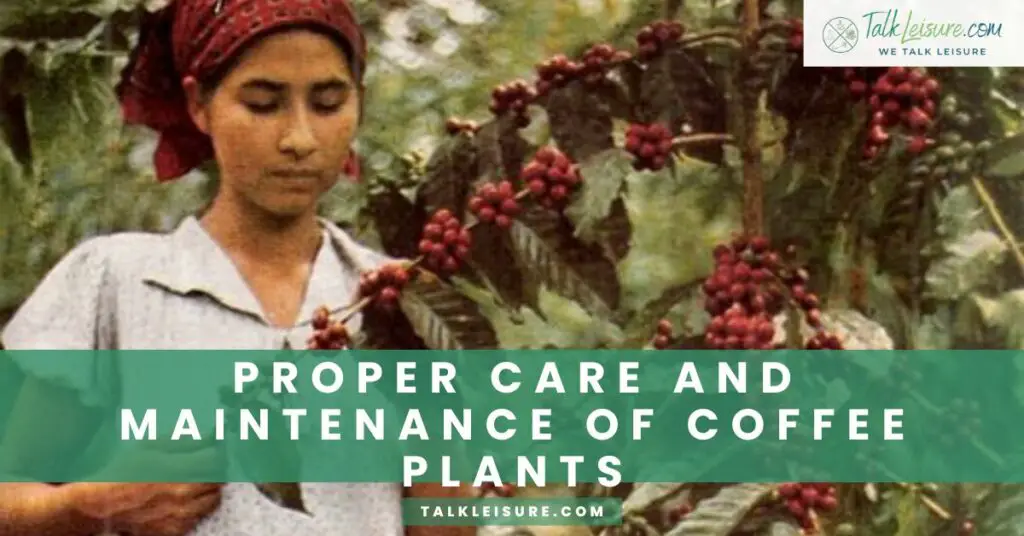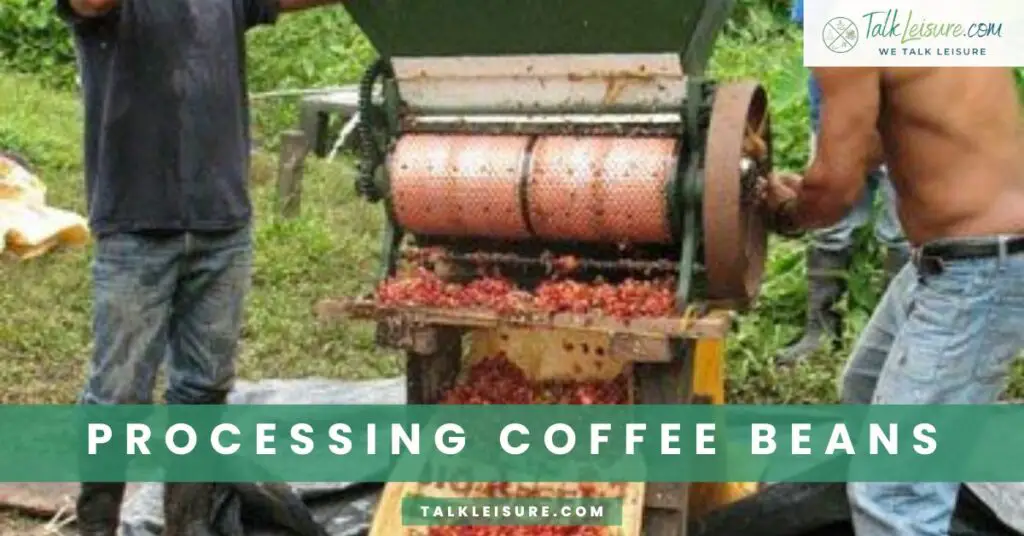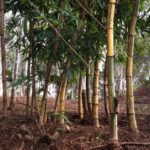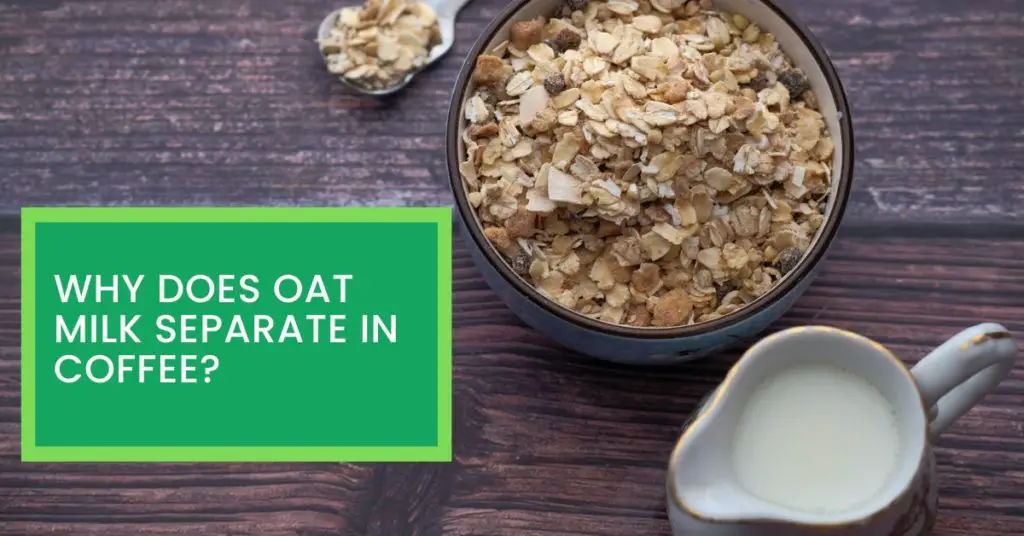Explore the fascinating world of coffee farming as I take you through a day in the life of a coffee farmer.
From sunrise to sunset, discover the dedication, passion, and hard work that goes into cultivating the beans that fuel your daily brew.
Working as a coffee farmer is a labor of love.
Every day, I wake up early to start my day in the fields.
The first task is to inspect the coffee plants for any signs of pests or diseases.
I carefully examine each plant and make note of any issues that need immediate attention.
Next, it’s time to tend to the plants.
This includes pruning, watering, and applying fertilizers to ensure optimal growth and yield.
Coffee plants require a lot of care and attention, so I make sure to give them the love they need.
After tending to the plants, it’s time to harvest the ripe coffee cherries.
This can be a long and tedious process, as I have to carefully pick only the ripe cherries by hand.
It requires patience and precision, but it’s worth it in the end.
Once the cherries are harvested, they are taken to the processing station.
Here, they undergo a series of steps to remove the pulp and dry the beans.
It’s a meticulous process that requires constant monitoring to ensure quality.
At the end of the day, I take a moment to reflect on the hard work and dedication that goes into being a coffee farmer.
It’s not an easy job, but seeing the final product and knowing that I have contributed to the wonderful world of coffee makes it all worthwhile.
What can coffee growers do to grow resilient variants of coffee to deal with climate change?
Preparing the Land
Choosing the Right Location for Coffee Cultivation
As a coffee farmer, location is everything.
I have spent years researching and experimenting to find the perfect spot for growing coffee.
The climate, altitude, and soil composition all play crucial roles in determining the quality and taste of the coffee beans.
I look for areas with a mild temperature, abundant rainfall, and well-drained soils to ensure optimal growth.
How to Create an Eco-friendly Coffee Routine
Preparing the Soil for Planting Coffee Seedlings
Once I have selected the ideal location, it’s time to prepare the soil for planting the coffee seedlings.
This involves several steps, starting with clearing the land from any weeds or debris.
I then till the soil to improve its structure and add organic matter to enhance fertility.
To ensure proper drainage, I also create channels to prevent waterlogging.
After the soil is prepared, I carefully plant the coffee seedlings, making sure to space them adequately for optimal growth.
It’s important to provide them with enough nutrients and water during the establishment phase to ensure healthy root development.
Preparing the land for coffee cultivation is a meticulous process that requires patience and attention to detail.
But when I see the coffee plants thriving in the rich soil, I know that all the hard work was worth it.
Proper Care and Maintenance of Coffee Plants

Early in the morning, I head out to the coffee plantation, armed with my tools and a passion for coffee.
The first task of the day is to inspect the plants for any signs of pests or diseases.
If I notice any issues, I take immediate action to mitigate the damage.
This could involve applying organic pest control methods or removing infected plants to prevent the spread.
Next, I check the soil moisture levels.
Coffee plants require consistent moisture but are also susceptible to overwatering.
I adjust the irrigation system accordingly to maintain the right balance.
Pruning is another crucial aspect of coffee plant care.
I carefully trim the branches to promote airflow and sunlight penetration, ensuring the optimal growth of the coffee cherries.
It’s a meticulous process, but it helps prevent diseases and encourages higher yields.
Fertilization is also crucial for the health and productivity of the coffee plants.
I follow a strict schedule of applying organic fertilizers to provide the necessary nutrients.
This helps the plants thrive and produce high-quality coffee beans.
Throughout the day, I also keep a close eye on the weather conditions.
Temperature, rainfall, and sunlight all play vital roles in the growth of coffee plants.
If necessary, I take protective measures, such as providing shade during scorching days or using row covers during heavy rains.
Harvesting Coffee Beans
Being a coffee farmer is a labor of love.
It’s a journey that requires dedication, patience, and a deep understanding of the coffee plants.
Let me take you through a day in my life as a coffee farmer, specifically focusing on the exhilarating process of harvesting coffee beans.
Determining the Optimum Time for Coffee Cherry Picking
Timing is crucial when it comes to harvesting coffee cherries.
The stage at which the cherries are picked directly impacts the taste and quality of the final cup of coffee.
I carefully monitor the cherry color, ensuring they reach the perfect balance between ripeness and sweetness.
This is when they are at their peak flavor potential, offering the delicate balance of acidity and sweetness that coffee connoisseurs love.
Different Methods of Coffee Bean Harvesting
Coffee beans can be harvested using various methods, each with its unique advantages and considerations.
One common method is selective picking, where only the ripe cherries are handpicked.
This method ensures a high-quality yield but requires skilled labor and multiple passes through the plantation as cherries ripen at different rates.
Another approach is strip picking, where all the cherries across a plant are harvested simultaneously.
This method requires less labor but may result in a mix of ripe and unripe cherries, affecting the overall taste profile.
There’s also mechanical harvesting, which involves using machines to strip the cherries from the branches.
This method is efficient but often used for lower-grade coffee beans, where taste nuances are less critical.
Processing Coffee Beans

Being a coffee farmer is an incredibly rewarding experience.
Every day, I wake up with a sense of purpose, knowing that I am playing a significant role in bringing people their beloved cup of coffee.
Today, I want to give you an insight into the fascinating world of coffee bean processing.
The Importance of Coffee Bean Processing
Once the coffee cherries are harvested, the next step is processing them to transform them into flavorful coffee beans.
This crucial process greatly impacts the overall taste and quality of the coffee.
Proper processing techniques enhance the natural flavors and remove any unwanted impurities.
Wet and Dry Processes in Coffee Bean Preparation
There are two main methods of coffee bean processing: the wet process and the dry process.
In the wet process, the cherries are sorted, and the outer skin is removed using water.
The beans are then fermented to break down the remaining pulp, washed, and dried.
This method often yields coffees with bright acidity and clean flavors.
On the other hand, the dry process involves drying the whole cherries under the sun, allowing the fruit to naturally ferment and dry.
Once dried, the outer layers are removed, revealing the coffee beans.
This process often results in sweeter, fruitier, and fuller-bodied coffees.
As a coffee farmer, I carefully choose the processing method based on the desired flavor profile and the characteristics of the coffee cherries I have harvested.
Drying and Sorting Coffee Beans
As a coffee farmer, one of the most crucial steps in coffee bean processing is drying.
Drying the beans is essential to remove excess moisture and preserve the flavor and quality of the coffee.
After the cherries are harvested and processed, they contain a significant amount of water.
If the beans are not dried properly, they can develop mold and other defects that will negatively impact the taste.
Drying the beans ensures that they have a longer shelf life and maintain their aroma and flavor.
Removing Defects and Sorting the Beans for Quality
Once the coffee beans are dried, the next step is to remove any defects and sort them according to their quality.
This process involves meticulously examining each bean and removing any unwanted impurities such as insect damage, discolored beans, or broken beans.
By removing these defects, coffee farmers ensure that only the highest quality beans make it to the final product.
Proper sorting is crucial in maintaining the consistency and taste of the coffee.
Coffee Bean Roasting
Roasting coffee beans involves carefully applying heat to transform the green beans into the rich, aromatic brown beans we all love.
The beans go through various stages of roasting, each imparting its unique flavor profile.
From light roasts with bright acidity and delicate flavors to dark roasts with bold, smoky notes, the possibilities are endless.
Different Levels of Roast and their Impact on Flavor
The level of roast plays a significant role in determining the flavor of the coffee.
Light roasts preserve the natural nuances of the beans, allowing the distinct characteristics of the origin to shine through.
Medium roasts strike a balance between acidity and body, offering a well-rounded cup of coffee.
Dark roasts bring out bolder flavors and richer body, but with a diminished acidity.
As a coffee farmer, it is essential to understand the different levels of roast and their impact on flavor to create the perfect cup of coffee.
It requires experimentation and a keen palate to achieve the desired balance of taste.
Packaging and Exporting Coffee

As a coffee farmer, packaging plays a crucial role in ensuring the quality and freshness of my coffee beans.
After the roasting process, it’s important to package the beans in a way that preserves their aroma and flavor until they reach the consumer’s cup.
Firstly, I carefully select packaging materials that provide an airtight seal to keep oxygen out.
Oxygen exposure can lead to the deterioration of the beans’ flavor and aroma over time.
To maintain freshness, I opt for high-quality bags with one-way valves that allow the release of carbon dioxide while preventing oxygen from entering.
Additionally, I consider the packaging design.
Eye-catching labels and informative content attract consumers and provide them with the necessary details about the origin, flavor profile, and brewing recommendations of the coffee.
It’s essential to convey the passion and story behind my coffee brand through the packaging, making it stand out from the competition.
The Process of Exporting Coffee to International Markets
Exporting coffee to international markets requires careful planning and adherence to regulations.
Here’s a glimpse into the process:
Branding is paramount throughout this process, as it helps create a distinct identity for my coffee brand in international markets.
From the packaging design to the storytelling behind each cup, branding captures the essence of my coffee, making it memorable and enticing to coffee lovers around the world.
In the next blog section, I will explore the importance of sustainable practices in coffee farming and share how I incorporate eco-friendly methods into my cultivation process.
Stay tuned for more insights into the world of coffee farming and the journey from farm to cup!
Conclusion
Being a coffee farmer is not just a job; it’s a way of life.
From carefully selecting and packaging the beans to navigating the complexities of exporting to international markets, every aspect of coffee farming requires dedication and passion.
As a coffee farmer, I take pride in the quality and freshness of my beans, ensuring that they are packaged to preserve their aroma and flavor until they reach the consumer’s cup.
Exporting coffee involves meticulous planning, quality control, and understanding the preferences of different markets.
But throughout this journey, one thing remains paramount: branding.
It is through branding that I can create a distinct identity for my coffee brand, capturing the attention of coffee lovers around the world.
So stay tuned for more insights into the world of coffee farming and the journey from farm to cup, including the importance of sustainable practices in coffee cultivation.
Frequently Asked Questions
How long does it take for a coffee tree to produce beans?
Coffee trees typically start producing beans after three to four years. However, the quality and quantity of the beans improve as the tree grows older, with peak production occurring between five and ten years.
What are the different coffee bean varieties?
There are several coffee bean varieties, but the most commonly grown are Arabica and Robusta. Arabica beans are known for their delicate flavors and are considered higher in quality, while Robusta beans have a stronger, more bitter taste.
How do you harvest coffee beans?
Coffee beans are usually handpicked to ensure only ripe cherries are collected. This labor-intensive process requires skilled workers to carefully select the cherries and separate them from the unripe ones. Mechanical harvesting is also used in some large-scale plantations.
How are coffee beans processed after harvesting?
After harvesting, the coffee cherries undergo processing to remove the outer skin and fruity pulp, leaving behind the beans. There are two common methods of processing: the dry method (natural) and the wet method (washed). Each method produces beans with different flavor profiles.
What is the role of sustainability in coffee farming?
Sustainability plays a vital role in coffee farming. It involves adopting practices that protect the environment, conserve water, and ensure the long-term viability of coffee plantations. Sustainable coffee farming also promotes fair treatment of workers and supports local communities.
These are just a few of the frequently asked questions about coffee farming. If you have more questions or want to learn more about the fascinating world of coffee farming, feel free to reach out.
Best Wishes!












